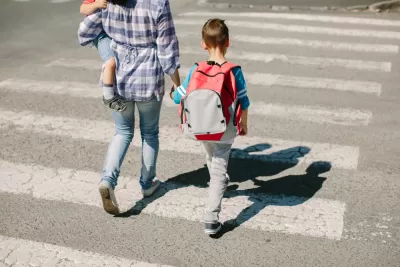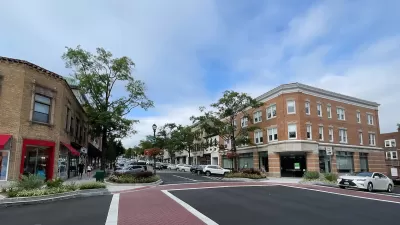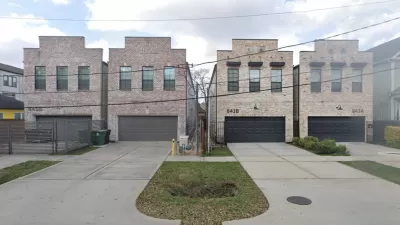In many rural and suburban Washington state communities, children who walk or bike to school don’t have access to safe, adequate pedestrian facilities.

Only 12 percent of Washington state’s K-8 students walk or bike to school, but of the students who do, many don’t have access to safe sidewalks, reports Mike Lindblom in The Seattle Times.
As Lindblom explains, “U.S. schools are often built on the suburban fringe, where formerly rural roads aren’t next to housing, or aren’t equipped with sidewalks or trails. More parents drive, which adds traffic, which makes the area more hostile to pedestrians.” In Washington State, “Residential sprawl, along with the desire to place campuses on large, inexpensive parcels, tends to result in sites distant from neighborhoods, or along high-speed rural roads.”
The article describes several examples of neighborhoods where parents and school administrators have identified dangerous routes. According to Lindblom, “There’s no database of inadequate school zones, but one barometer is that 165 school projects applied for state grants.” A $35 million state school routes fund received $200 million worth of requests from local communities. “Move Ahead Washington, the $17 billion package passed last year by the Legislature, is supposed to double the school safe routes fund, by adding $290 million through 2037. Pedestrian safety of all kinds will receive $1.1 billion, primarily financed by carbon taxes.”
FULL STORY: Where WA schoolchildren walk next to busy traffic

Planetizen Federal Action Tracker
A weekly monitor of how Trump’s orders and actions are impacting planners and planning in America.

San Francisco's School District Spent $105M To Build Affordable Housing for Teachers — And That's Just the Beginning
SFUSD joins a growing list of school districts using their land holdings to address housing affordability challenges faced by their own employees.

The Tiny, Adorable $7,000 Car Turning Japan Onto EVs
The single seat Mibot charges from a regular plug as quickly as an iPad, and is about half the price of an average EV.

San Diego Votes to Rein in “Towering” ADUs
City council voted to limit the number of units in accessory buildings to six — after confronting backyard developments of up to 100 units behind a single family home.

Texas Legislature’s Surprising Pro-Housing Swing
Smaller homes on smaller lots, office to apartment conversions, and 40% less say for NIMBYs, vote state lawmakers.

Even Edmonton Wants Single Staircase Buildings
Canada's second most affordable major city joins those angling to nix the requirement for two staircases in multi-family buildings.
Urban Design for Planners 1: Software Tools
This six-course series explores essential urban design concepts using open source software and equips planners with the tools they need to participate fully in the urban design process.
Planning for Universal Design
Learn the tools for implementing Universal Design in planning regulations.
Borough of Carlisle
Smith Gee Studio
City of Camden Redevelopment Agency
City of Astoria
Transportation Research & Education Center (TREC) at Portland State University
City of Camden Redevelopment Agency
Municipality of Princeton (NJ)





























